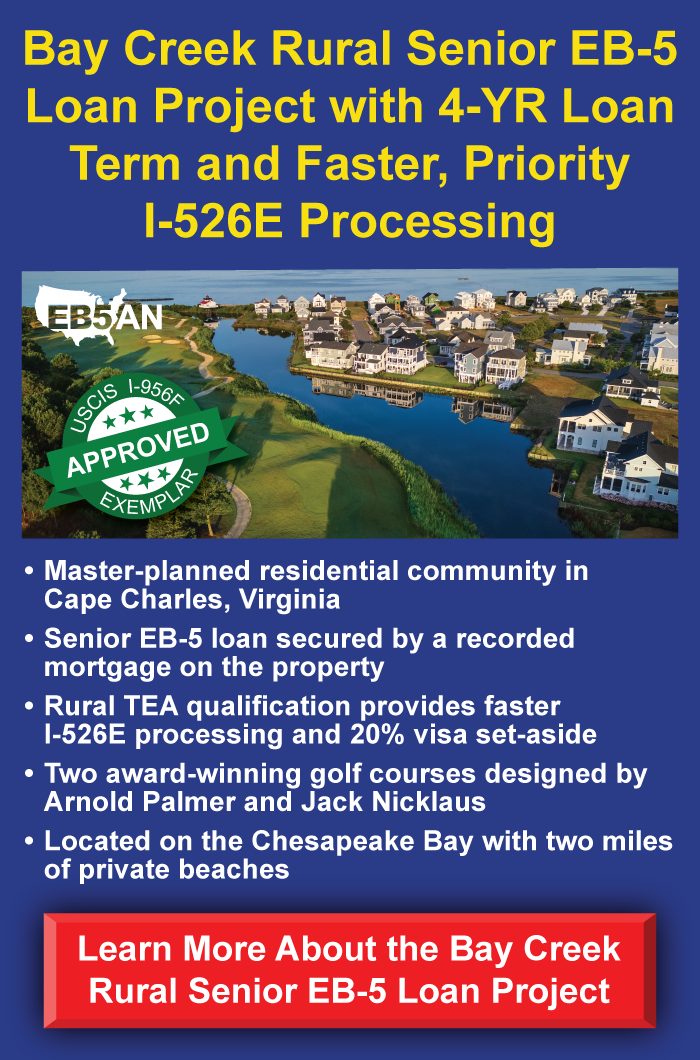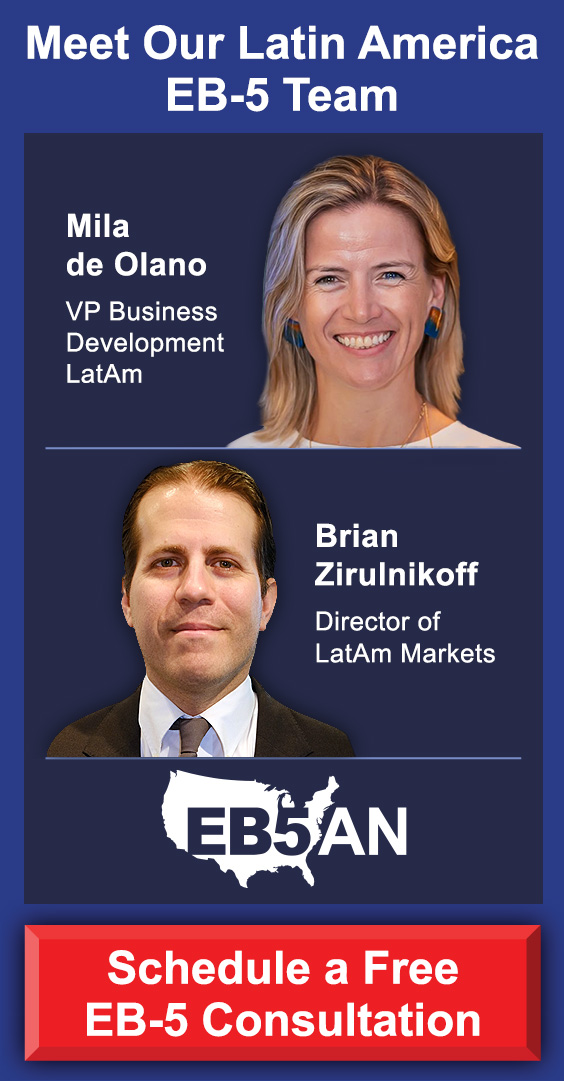Although the EB-5 visa is often referred to as America’s version of a golden visa, the EB-5 Immigrant Investor Program is, in reality, not a golden visa. While it offers residency in exchange for investment, the EB-5 program differs significantly from the popular golden visas.
Unlike most popular programs that offer residency or citizenship through investment, the EB-5 program is not just an easy way for foreign nationals to “purchase” U.S. residency. Instead, the program aims to boost the U.S. economy by using foreign investment to foster economic development and create jobs for American workers.
Because of this focus, prospective investors must meet strict investment, job creation, and residency requirements to remain eligible for an EB-5 Green Card.
Below, this article goes into more detail on how these requirements make the EB-5 program different from popular golden visas.
How the EB-5 Visa Differs From Popular Golden Visas
- The “At Risk” Principle
- No Personal Property Purchase Option
- Strict Job Creation Requirement
- Emphasis on Economic Development
- Strict Source of Funds Requirement
- Potential for Full Repayment
- Path to U.S. Citizenship
Start Your U.S. Permanent Residency Journey Today
How the EB-5 Visa Differs From Popular Golden Visas
The EB-5 program offers U.S. permanent residency to foreign nationals in exchange for their investment in U.S. economic development. To qualify for the program, applicants must invest at least $1,050,000 in a new commercial enterprise (NCE) or $800,000 if the NCE is in a targeted employment area (TEA). Critically, the NCE must use the investor’s funds to create or maintain at least 10 full-time jobs for U.S. workers.
While residency for investment is also the underlying principle for golden visas, the EB-5 program is not a golden visa. Below are some ways the EB-5 visa differs from the popular golden visas.
The “At Risk” Principle
One of the core requirements for EB-5 investors to maintain eligibility is that their invested funds must remain “at risk” for at least two years. In other words, the investor must be able to lose their capital if the project fails.
This requirement ensures that the funds are invested in an operational business that contributes to economic development, not just a fund that secures investors’ money.
No Personal Property Purchase Option
In most golden visas, property purchase is among the top investment options for foreign nationals seeking residency. Through this option, foreign nationals can obtain residency or citizenship rights simply by purchasing a home or an existing commercial property.
The personal property purchase option does not exist in the EB-5 program, as purchasing property does not directly contribute to economic development. While you can purchase property in the U.S. for private or commercial purposes while a permanent resident—indeed, a Green Card even makes doing so easier—purchasing that property only makes you a U.S. property owner. It does not come with any residency or immigration benefits.
However, you can invest in a real estate development project through a regional center. In this case, the regional center pools funds from several investors and invests the funds in a large real estate development project that generates economic activities worth millions of dollars and, in all likelihood, hundreds of jobs.
Through this approach, the regional center acts as the managing partner of the NCE, while investors sign up as limited partners.
Strict Job Creation Requirement
As mentioned above, job creation is one of the core requirements of the EB-5 program. To be eligible for an EB-5 Green Card, your EB-5 investment must create or sustain at least 10 W-2 jobs for U.S. workers.
When you file your Form I-526E (your EB-5 petition), you must provide compelling evidence that your investment will create the required jobs. After your two-year conditional residence, you will file a Form I-829 to remove your Green Card conditions. USCIS will then analyze your investment to ensure it has created the required jobs as stipulated in your Form I-526E.
If you’ve created the required jobs and met the other program requirements, USCIS will approve your Form I-829 and issue you an unconditional, permanent Green Card.
Emphasis on Economic Development
In many golden visas, investors can simply contribute a lump sum to a government-controlled fund or purchase government bonds. These contributions are meant to support government infrastructural developments. However, the funds may or may not be channeled toward economic growth, depending on each country’s political climate and administrative transparency. Conversely, the EB-5 program focuses on fostering direct economic development.
Strict Source of Funds Requirement
Beyond attracting foreign investments, the EB-5 program is structured to ensure that all invested funds come from lawful sources. Hence, investors must provide documents proving they obtained the invested funds through legal means. This is called source of funds documentation.
Whether the EB-5 investor is a multi-million-dollar entrepreneur or a student investing with inherited/gifted funds, each EB-5 investor must prove to USCIS that they legally obtained every penny of their investment.
To do this, the investor must provide documents tracing the invested funds to their origin and showing a clear legal path of funds from this origin to their EB-5 investment. Failure to do so will result in a rejection of their Form I-526E.
This strict source of funds requirement differentiates the EB-5 program from most golden visa programs. It ensures that foreign nationals do not participate in the EB-5 program using proceeds from criminal/illegal activities.
Potential for Full Repayment
The EB-5 program fundamentally differs from many golden visa programs because it is not a straightforward purchase of residency but an investment. While golden visas often involve non-refundable government donations or bond purchases, EB-5 investments are placed in business ventures designed to generate returns. If the project succeeds, EB-5 investors can potentially recover 100% of their invested funds, which is rarely the case in global residency by investment programs. This unique aspect makes EB-5 both a pathway to U.S. residency and a strategic financial opportunity.
Path to U.S. Citizenship
While some global residency by investment programs may eventually lead to citizenship, it is not always the standard outcome. In contrast, the EB-5 program directly opens the path to U.S. citizenship through naturalization after five years of permanent residency. This period includes the initial two-year conditional Green Card, meaning the countdown toward citizenship begins as soon as conditional permanent residency is granted. As a result, the EB-5 program offers a relatively straightforward path to citizenship compared to other global investment residency options.
Start Your U.S. Permanent Residency Journey Today
The EB-5 program allows foreign nationals to acquire U.S. permanent residency for themselves and their dependent family members by investing in U.S. economic development.
Although it’s sometimes referred to as the “American golden visa” in immigration circles, the EB-5 visa is not a golden visa. It is, however, still a fast and straightforward route to achieving your American dream.
If you’re interested in obtaining a U.S. Green Card, EB5AN can help you start your EB-5 journey today. In 10+ years of practice, we’ve helped over 2,300 families from more than 70 nationalities become U.S. permanent residents through the EB-5 program. We provide first-rate, low-risk EB-5 regional center projects with a 100% USCIS approval rate to date.
Book a free one-on-one consultation with our EB-5 experts today to learn how you can start the EB-5 process.










